Are you a new parent wondering how to style your newborn’s hair properly? You’re not alone. Many parents struggle with this task, as newborn hair can be delicate and require extra care.
How to style newborn hair can be a delightful yet delicate task for parents. Newborns often have soft, fine hair that requires extra care and attention to maintain their health and natural beauty. Whether your baby has a head full of hair or just a few wisps, creating simple, gentle styles can help keep their hair neat while ensuring comfort. Understanding the proper techniques and choosing baby-safe products are essential steps to effectively caring for your little one’s hair.
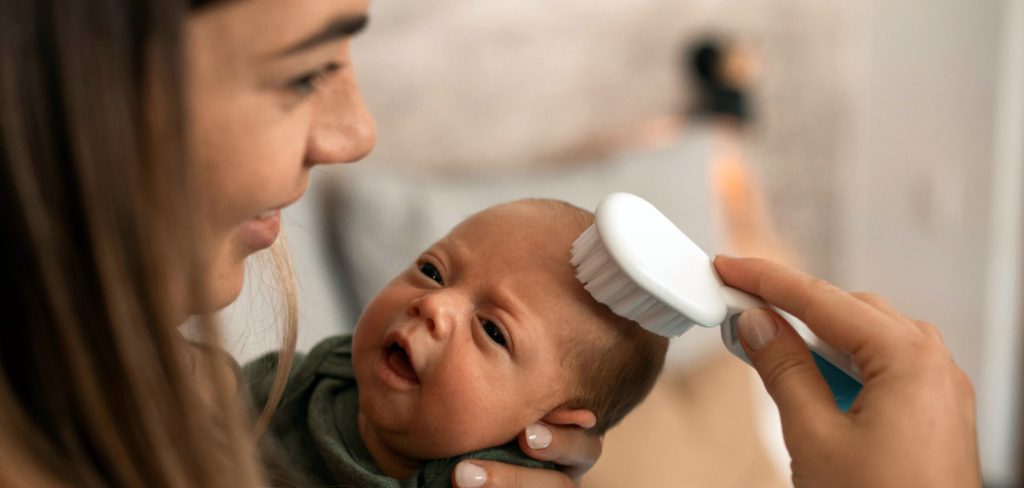
This guide will provide helpful tips and ideas to help you style your newborn’s hair quickly and carefully.
What Will You Need?
Before you begin styling your newborn’s hair, gathering all the necessary supplies is essential. Here are a few basics that will come in handy:
- Soft baby brush or comb
- Gentle shampoo and conditioner
- Baby-safe hair oil or natural moisturizer
- Bowls filled with warm water and cold water (depending on the method used)
- Soft towels or washcloths
These items will make the process smoother and more efficient, allowing you to focus on creating adorable hairstyles for your little one.
10 Easy Steps on How to Style Newborn Hair
Step 1: Start With Clean and Moisturized Hair
To begin, gently wash your newborn’s hair using a baby-safe shampoo and lukewarm water. Ensure the water temperature is comfortable by testing it on the inside of your wrist before applying it to your baby’s scalp. Use minimal shampoo, as newborns do not produce much oil, and excess product can be complex to rinse out.
Once you’ve applied the shampoo, softly massage your baby’s scalp in circular motions using your fingertips. This helps clean the scalp while promoting blood circulation and encouraging healthy hair growth. After rinsing thoroughly with lukewarm water, pat the hair dry with a soft towel, ensuring you do not rub, as newborn hair is delicate and prone to breakage. Apply a small amount of baby-safe hair oil or natural moisturizer for added moisture to keep the scalp nourished and prevent dryness.
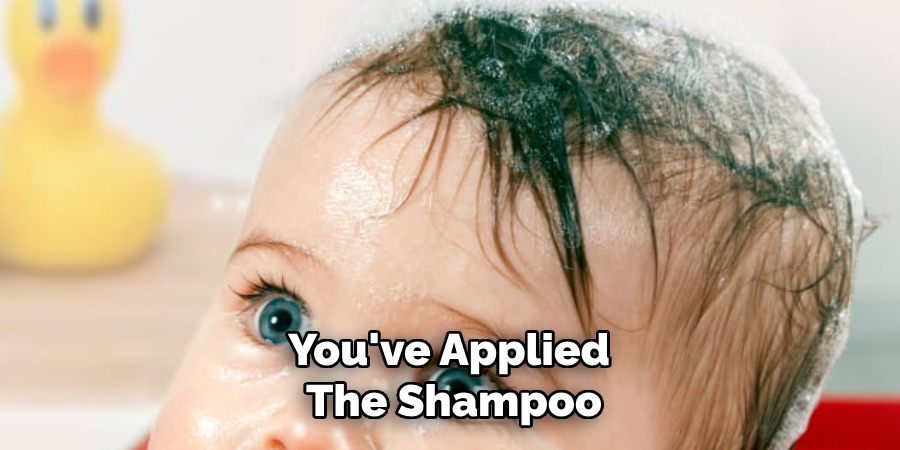
Step 2: Use a Soft Brush or Comb to Detangle Hair
Once the hair is clean and moisturized, gently detangle it using a soft-bristled baby brush or a wide-tooth comb designed for infants. Start at the tips of the hair and work toward the scalp to avoid unnecessary pulling or discomfort. Use slow and gentle strokes to ensure you do not hurt your newborn’s sensitive scalp. If you encounter any tangles, apply a small amount of baby-safe detangling spray or a tiny drop of hair oil to help smooth the strands. Regular brushing keeps the hair neat and encourages healthy scalp stimulation, which supports hair growth.
Step 3: Style the Hair Gently
After detangling, you can style your newborn’s hair simply and gently. Avoid using tight hairstyles or accessories that could pull on the scalp or cause irritation. Opt for soft headbands or clips explicitly designed for babies, ensuring they do not have small parts that could pose a choking hazard. If your baby has short or fine hair, leaving it natural is often the best choice. Remember, the focus should be on keeping the hair neat, comfortable, and stress-free to promote healthy growth.
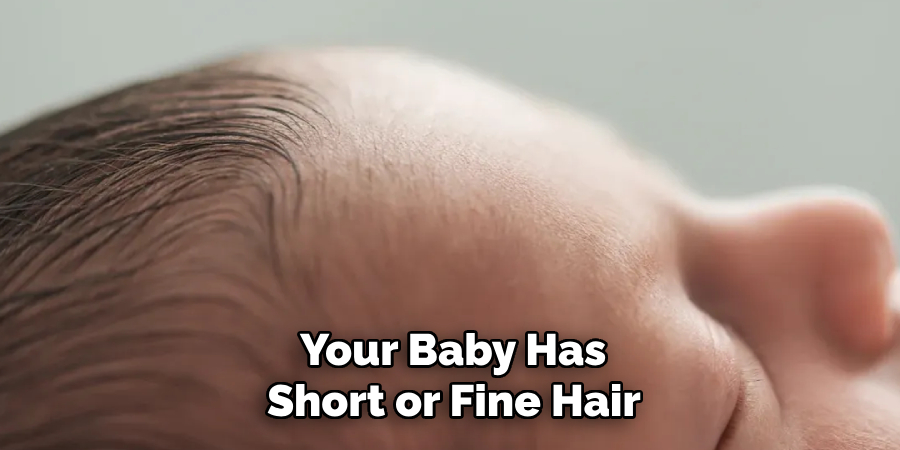
Step 4: Maintain a Healthy Hair Care Routine
Establish a regular hair care routine to ensure your newborn’s hair remains healthy and clean. Wash their hair with a gentle, baby-safe shampoo no more than two to three times a week, as over-washing can strip natural oils and dry out the scalp. Always rinse thoroughly to avoid any residue that might irritate. After washing, gently pat the hair dry using a soft towel—avoid rubbing, as this can damage delicate strands. Regular hair care helps maintain hygiene and supports the overall health of your baby’s scalp and hair.
Step 5: Protect Your Baby’s Hair and Scalp
Protecting your baby’s hair and scalp is essential to prevent damage and irritation. Limit your baby’s exposure to harsh environmental elements such as direct sunlight, strong winds, or cold weather. Consider using a soft, breathable hat to shield your head outdoors. Avoid using styling products like gels or sprays, as these can be too harsh for sensitive skin and hair. Additionally, ensure your baby’s bedding and clothing are made from soft, natural materials to minimize friction, which could lead to hair breakage. Taking these precautions will help nurture your baby’s delicate hair and support healthy growth.
Step 6: Establish a Routine
Establishing a consistent hair care routine for your baby can make the process easier and more effective. Choose specific days for washing and grooming to create a predictable schedule that both you and your baby can adjust to over time. Incorporate gentle brushing with a soft-bristled brush to stimulate the scalp and improve circulation, promoting healthy hair growth. Consistency helps maintain your baby’s hair and provides a bonding opportunity, as these moments of care can be soothing and enjoyable for both of you.
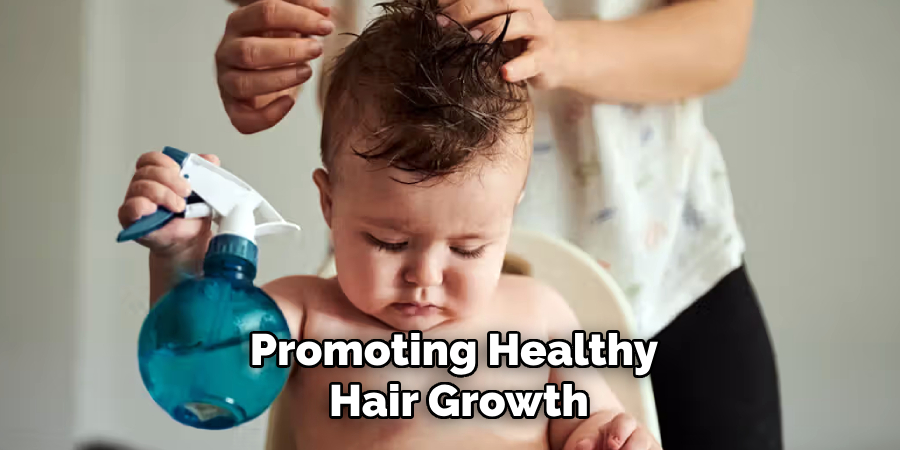
Step 7: Monitor and Adjust as Needed
As your baby grows, their hair care needs may change. Pay close attention to any signs of dryness, irritation, or changes in hair texture, and adjust the routine accordingly. For example, apply a small amount of natural oil to address dryness or switch to a different shampoo that better suits your baby’s developing hair. Always prioritize products that are hypoallergenic and free from harsh chemicals to ensure their safety and comfort. By staying attentive and flexible, you can support your baby’s evolving hair care needs while maintaining their overall well-being.
Step 8: Protect Your Baby’s Hair
Protecting your baby’s hair is an essential part of maintaining its health and softness. Avoid exposing your baby’s hair to excessive sunlight or harsh environmental elements by using hats or soft caps during outings. Additionally, ensure your baby’s bedding is made of gentle materials like cotton or silk to reduce friction that can lead to hair breakage. When using hair accessories, choose soft, non-slip options that won’t tug or pull on delicate strands.
Step 9: Monitor Your Baby’s Scalp Health
A healthy scalp is critical for your baby’s hair growth and overall comfort. Regularly inspect your baby’s scalp for signs of dryness, irritation, or buildup. If you notice any issues such as flakiness, redness, or an unusual rash, consult your pediatrician to address potential underlying causes. Keeping your baby’s scalp clean and moisturized with gentle, baby-safe products is key to preventing common concerns like cradle cap.
Step 10: Be Patient and Gentle
Hair growth in babies takes time and varies from one child to another. It’s essential to be patient and avoid comparing your baby’s hair growth to others. Handle your baby’s hair with care during grooming, using soft brushes or combs specifically designed for infants. Avoid tight hairstyles or frequent styling, as this can strain the hair follicles and lead to breakage. Nurturing your baby’s hair with a calm and gentle approach fosters healthy growth and strengthens your bonding experience.
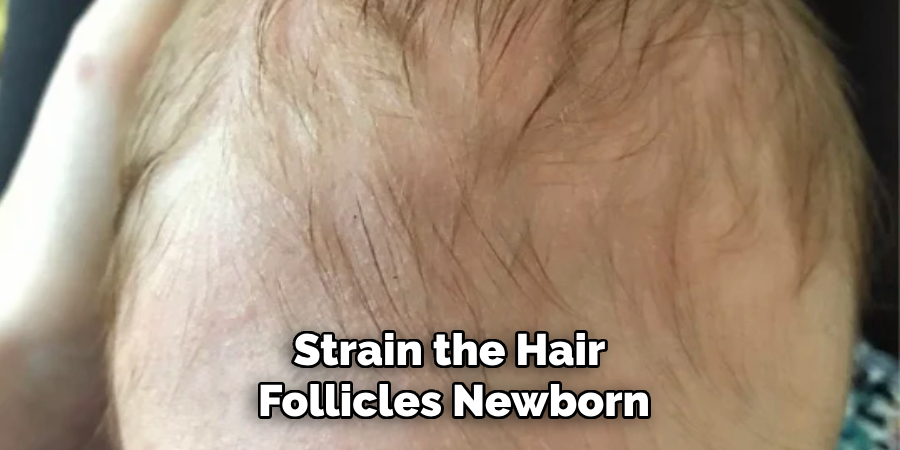
By following these simple steps, you can establish a healthy hair care routine for your newborn and support their hair growth and overall well-being.
5 Things You Should Avoid
- Using Harsh Products: Avoid applying shampoos, conditioners, or styling products that contain harsh chemicals. A newborn’s scalp is extremely sensitive, and such products can cause irritation or dryness.
- Overwashing the Hair: Washing a newborn’s hair too frequently can strip away natural oils, leading to dryness. Stick to a gentle washing routine, about 2-3 times a week.
- Using Tight Hairbands: Steer clear of tight hairbands or accessories that may pull on the delicate hair and scalp. This can cause unnecessary discomfort or even lead to hair breakage.
- Combing Wet Hair Aggressively: Newborn hair is at its weakest when wet. Avoid aggressive combing or brushing as it may lead to hair loss or breakage. Use a soft-bristle brush and gentle strokes.
- Ignoring Scalp Care: Don’t neglect the newborn’s scalp while focusing solely on the hair. Proper scalp hygiene and care are essential for healthy hair growth and to prevent scalp issues like cradle caps.
By avoiding these five things, you can ensure that your newborn’s hair stays healthy and shiny.
Conclusion
Taking care of your newborn’s hair is an essential part of their overall well-being.
By following a gentle and consistent routine, using baby-safe products, and being attentive to any changes, you can support healthy hair growth and strengthen your bond with your little one. Remember to be patient and always prioritize safety and comfort when it comes to your baby’s hair care.
Hopefully, the article on how to style newborn hair has provided you with helpful tips and guidance that will make the process easier for both you and your baby. With proper care, your little one’s hair will continue to grow and develop healthily. So, embrace those precious moments of grooming and enjoy watching your baby’s beautiful locks grow!
About the Author
Jane Hubbard is a passionate beauty expert with a wealth of experience in makeup, hair, and overall beauty techniques. After years of working as a hairdresser specialist, she followed her entrepreneurial spirit and started her own consultancy business.
Jane has always been driven by her desire to help others feel confident in their own skin, and she does this by sharing her knowledge, experiences, and practical beauty tips. Through her consultancy, she empowers individuals to embrace their unique beauty, offering tailored guidance that boosts both self-esteem and personal style.
Professional Focus
- Specializes in makeup, hairstyling, and beauty consulting.
- Provides personalized beauty advice, tips, and techniques to help individuals feel confident in their appearance.
- Dedicated to staying up-to-date with the latest industry trends and developments.
- Passionate about creating a comfortable and empowering experience for every client.
Education History
- University of Craft and Design – Bachelor of Fine Arts (BFA) in Woodworking and Furniture Design
- Woodworking Apprenticeships – Extensive hands-on training with skilled craftsmen to refine carpentry and furniture making techniques
- Online Courses & Masterclasses – Continued education in advanced woodworking techniques, design principles, and specialized tools
Expertise:
- Makeup artistry, hairstyling, and beauty consulting.
- Personalized beauty techniques to enhance confidence and self-expression.
- Educating clients on how to maintain their beauty routines at home.
